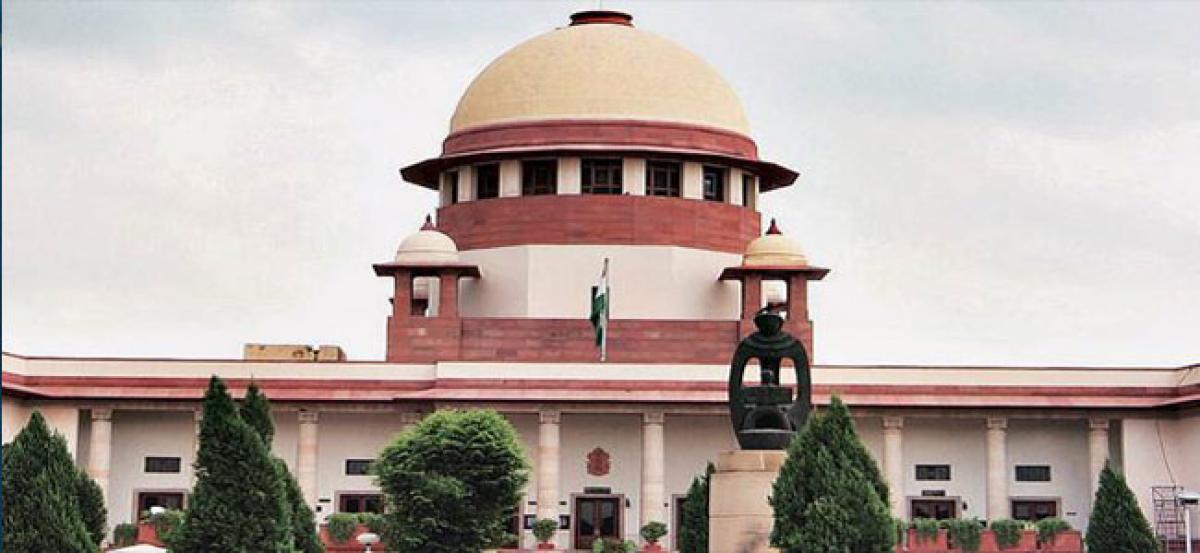Live
- Bringing joy to MPP schoolchildren
- Contaminated food worth Rs 52,000 disposed
- BJP MLA warns of protest over Panchamasali reservation demand
- Sunspots and solar flares can affect Earth’s surface
- Discom staff neglect jungle clearance at poles
- Experts at COP29 urge India to tackle short-lived climate pollutants
- AGP inducts new locomotive
- Visakhapatnam: 31-year-old attacks girl for refusing his love
- MyVoice: Views of our readers 15th November 2024
- NWKRTC embraces digital payments to enhance passenger experience
Just In

The Constitution establishes a single integrated judicial system for the whole of India. The Supreme Court of India is the highest court of the country and below it are the High Courts at the state level. Other courts (Subordinate Courts) work under the High Courts. The Supreme Court controls and runs the judicial administration of India. All courts in India form links of a single judicial system.
Salient features of Indian Judiciary
Single and Integrated Judicial System
The Constitution establishes a single integrated judicial system for the whole of India. The Supreme Court of India is the highest court of the country and below it are the High Courts at the state level. Other courts (Subordinate Courts) work under the High Courts. The Supreme Court controls and runs the judicial administration of India. All courts in India form links of a single judicial system.
Freedom of Judiciary
The Constitution of India makes judiciary truly independent. It provides for:
(i) Appointment of judges by the President,
(ii) High qualifications for appointment as judges,
(iii) Removal of judges by a difficult method of impeachment,
(iv) High salaries, pension and other service benefits for judges,
(v) Independent establishment for the Judiciary, and
(vi) Adequate powers and functional autonomy for the Judiciary.
All these features together make the Indian Judiciary an independent judiciary.Judiciary as interpreter of the Constitution
The Constitution of India is a written and enacted constitution. The right to interpret and clarify the Constitution has been given to the Supreme Court. It is the final interpreter of the provisions of the Constitution of India.
Judicial review
The Constitution of India is the supreme law of the land. The Supreme Court acts as the interpreter and protector of the Constitution. It is the guardian of the fundamental rights and freedoms of the people. For performing this role, it exercises the power of judicial review. The Supreme Court has the power to determine the constitutional validity of all laws. It can reject any such law which is held to be unconstitutional. High Courts also exercise this power.
High Court for each state, provision for Joint High Courts
The Constitution lays down that there is to be a High Court for each state. However, two or more states can, by mutual consent, have a Joint High Court.
Supreme Court as the arbiter of legal disputes
The Constitution gives to the Supreme Court the jurisdiction in all cases of disputes:
(i) Between the Government of India and one or more states,
(ii) Between the Government of India and any state or states on one side and one or more states on the other, and
(iii) Between two or more states.
Guardian of citizens fundamental rights
Indian judiciary acts as the guardian of fundamental rights and freedoms of the people. The people have the Right to Constitutional Remedies under which they can seek the protection of the courts for preventing a violation or for meeting any threat to their rights. The Supreme Court and the High Courts have the power to issue writs for this purpose.
Separation of Judiciary from the Executive
The Constitution of India provides for a separation between the judiciary and the other two organs of the government. The judiciary is neither a branch of the executive nor in any way subordinate to it. The judicial administration in India is oraganised and run in accordance with the rules and orders of the Supreme Court.
Open trial
The courts in India are free. These conduct open trials. The accused is always given full opportunity to defend himself. The state provides free legal aid to the poor and needy.
Judicial aqctivism
Indian Judicial System has been becoming more and more active. The Supreme Court has been coming out with judicial decisions and directives aimed at active protection of public interest and human rights. Judiciary has been giving directives to public officials for ensuring a better security for the rights of the public. The Public Interest Litigation system has been picking up. The system of Lok Adalats has also taken a proper shape and health.
Public interest litigation system
Under this system the courts of law in India can initiate and enforce action for securing any significant public or general interest which is being adversely affected or is likely to be so by the action of any agency, public or private. Under it any citizen or a group or a voluntary organisation, or even a court herself, can bring to notice any case demanding action for protecting and satisfying a public interest.
It provides for an easy, simple, speedier and less expensive system of providing judicial relief to the aggrieved public. With all these features, the Indian Judicial System is an independent, impartial, free, powerful and efficient judicial system.

© 2024 Hyderabad Media House Limited/The Hans India. All rights reserved. Powered by hocalwire.com







